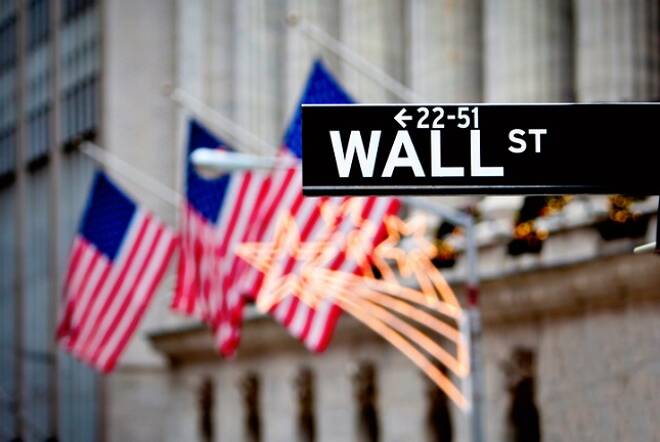Advertisement
Advertisement
Stocks Finished Mixed as Steep Drop in Treasury Yields Indicates Investors Worried About Global Growth
By:
he foundation for Monday’s weakness was laid last week when the U.S. Federal Reserve announced it was pausing future rate hikes for 2019 and slashing the outlook for growth in the country. This raised questions about the health of the economy, driving investors out of stocks and into the safe-haven U.S. Treasurys.
The major U.S. equity indexes finished mixed on Monday with the Dow Jones Industrial Average the sole winner of the day after eking out a small gain. Early in the futures session, U.S. stocks received a boost after news that special counsel Robert Mueller found no collusion with Russia on the part of President Donald Trump. After the initial euphoria faded, however, stocks dropped quickly on concerns over a slowing global economy.
In the cash market, the benchmark S&P 500 Index settled at 2798.36, down 2.35 or -0.08%. The blue chip Dow Jones Industrial Average closed at 25516.83, up 14.51 or +0.06% and the technology-based NASDAQ Composite finished at 7637.54, down 5.13 or -0.07%.
Recession Concerns Pressure Stocks Early
The foundation for Monday’s weakness was laid last week when the U.S. Federal Reserve announced it was pausing future rate hikes for 2019 and slashing the outlook for growth in the country. This raised questions about the health of the economy, driving investors out of stocks and into the safe-haven U.S. Treasurys.
Investor capital flowing into Treasurys helped trigger a plunge in yields. The drop was strong enough to drive the longer-term 10-year Treasury note yield under the short-term 3-month Treasury bill. This yield curve inversion was the first since 2007. Historical analysis of this phenomenon may be an indication that a recession is coming soon.
Contributing to the worries were the already weak outlooks for China and Japan, and disappointing economic data released last Friday out of Europe.
“Economies in Europe and China continue to deteriorate causing uneasiness that the problems overseas could affect the U.S. markets,” Bruce Bittles, chief investment strategist at Baird, wrote in a note. “There are signs that our economy is not as robust as last year such as the decline in capital spending in the third and fourth quarters of last year.”
Better European Data May Have Saved the Day
Better-than-expected data from Europe helped bring some relief to the markets on Monday. A report showing confidence among German companies unexpectedly improved in March, providing a glimmer of hope for the European economy. This news also helped drive Treasury yields higher, at least temporarily.
Ifo’s closely-watched index rose to 99.6, beating forecasts for a reading of 98.5, and a gauge of executives’ expectations also rose. The improvement helped to dispel some of the gloom after a survey on Friday showed German manufacturing in its deepest slump in more than six years.
According to Bloomberg, “The increase in the sentiment measure was the first in seven months. An improving mood among German businesses suggests Europe’s largest economy may be starting to find its footing after the Bundesbank all but gave up hopes for a turnaround this quarter.”
“The Ifo index just sent a tentative signal of relief for the German economy,” said Carsten Brzeski, chief economist at ING Germany. “The solid domestic fundamentals, low-interest rates and a weak Euro, still argue in favor of a rebound, mainly on the back of investments, consumption and some relief from the global risk factors.”
About the Author
James Hyerczykauthor
James Hyerczyk is a U.S. based seasoned technical analyst and educator with over 40 years of experience in market analysis and trading, specializing in chart patterns and price movement. He is the author of two books on technical analysis and has a background in both futures and stock markets.
Advertisement
